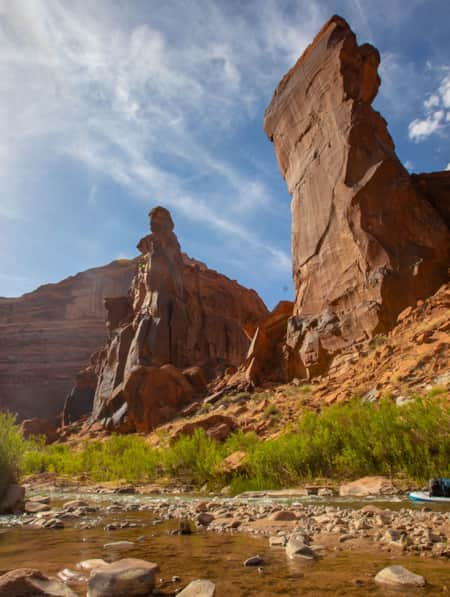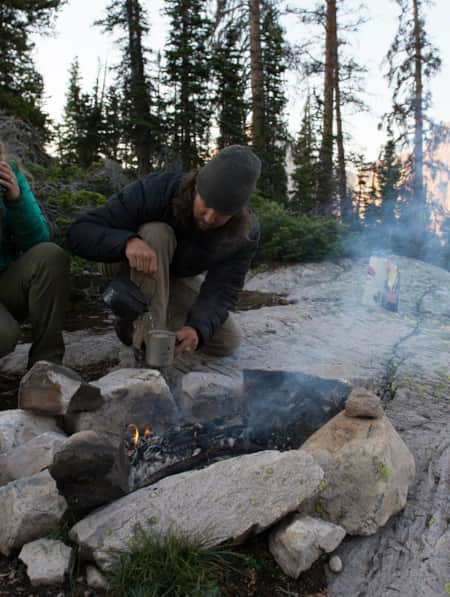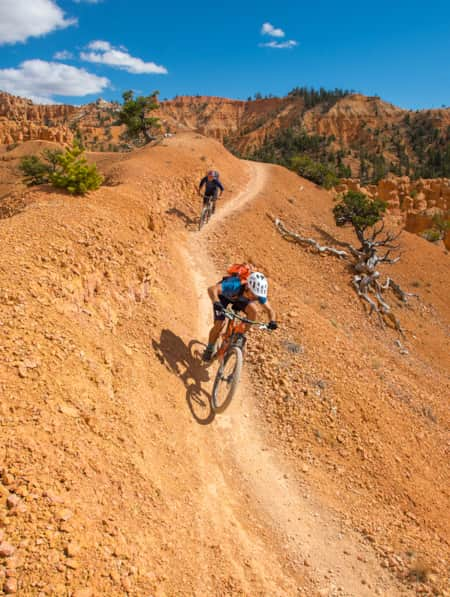Backpacking Routes in Utah
1. Lake Blanche Trail
As one of the Wasatch Mountain’s most popular backpacking tour destinations, Lake Blanche Trail starts in Big Cottonwood Canyon and meanders 7 miles out and back up Big Cottonwood Canyon. Find shaded forests, meadows and three lakes. Difficulty: Strenuous.2. Big Needles Loop in Canyonlands
Here’s a major backpacking journey covering the highlights of the Needles District of Canyonlands National Park. It’s a 23.2-mile loop and is rated as difficult. Take two days or five days. Difficulty: Difficult.3. West Rim Trail of Zion
The West Rim Trail of Zion National Park is a 14.2 one-way hike. This route is the most popular backpacking trail in Zion National Park, featuring easy access to remote country with striking vistas throughout the hike. Difficulty: Moderately strenuous north to south; strenuous south to north.4. Red Pine Lake Trail
Looking for a backpacking trip near Salt Lake City? As one of Little Cottonwood Canyon's most beloved hikes, Red Pine Lake Trail is a consistent 6.8 mile out-and-back climb up Red Pine Fork. It’s popular with day hikers and often a destination for overnighters. Difficulty: Strenuous.5. Dark Canyon Wilderness Trail
Feeling challenged? Only experienced backpackers — off-grid survival and map-reading skills are a must — should hike the Dark Canyon Wilderness. This 40-mile loop takes 5 to 7 days to accomplish, plus many days prior to prepare. Blanding, Utah is the nearest town. Difficulty: Moderately difficult. Map-reading skills are required.6. Lone Peak via Lake Hardy
This 12 mile point-to-point trail starts in Alpine, Utah and ends at Bells Canyon (near Sandy, Utah) on the Little Cottonwood Canyon side. Lone Peak via Lake Hardy is an overnight backpack through the heart of Utah’s first congressionally-designated wilderness. Difficulty: Extremely difficult.
7. Egypt Road
Near Escalante, the Egypt-Twentyfive Mile Wash takes backpackers on a 20-mile loop through a desert canyon of slickrock, sand and wash bottoms. Plan on a 2-day minimum, but 4 or 5 days for a more leisurely exploration. Difficulty: Strenuous due to length and hiking through water and dense vegetation.
8. Owl Canyon
Another backpacking trip near Blanding, the Owl Creek-Fish Creek Loop, Cedar Mesa is a multi-day trip through two desert canyons. Spy three arches, rock art and ancestral cliff dwellings along the strenuous 17-mile loop. Difficulty: Strenuous.
"I was to look around me as though I had never been in this place before. And slowly, my travels began to bear fruit."
– Alain de Botton, The Art of Travel
BACKPACKING REGIONS IN UTAH
-

Backpacking Northern Utah: Uinta Mountains
Blue-ribbon backpacking is abundant throughout the High Uintas Mountains.
-

Backpacking Northern Utah: Wasatch Range
Here are a few of the best backpack trips in the Wasatch Mountains.
-

Backpacking Southern Utah: Red Rock Country
Southern Utah has some of the best backpacking around. Explore more information here and plan your trip. Visit Utah.
Backpacking Tips and Tricks
There is no more varied place in the world than Utah to backpack. Here are a few tips to help get you in the right mindset for backpacking in Utah.
- The season can determine the destination, whether you choose to head for the mountains, make a pilgrimage to the desert, or both.
- Two-thirds of Utah is public land: Five national parks, nine million acres of national forest, millions of acres within national monuments and national recreation areas, and vast areas managed by the Bureau of Land Management.
- Regardless of where you choose to hike, keep safety in mind and be cautious.
- Never hike alone, always tell your friends and family where you are going and when you plan to return. Learn more about how you can support Utah’s local search and rescue teams with a Utah Search and Rescue Assistance card.
- Always carry plenty of water in both the deserts and mountains, no matter the season, no matter the outside temperature. You are hiking at high elevation.
- Bring a first-aid kit and a water filter. It's a good idea to take more food and water than you think you'll need in the event you become stranded.
- Be prepared to be truly self-reliant.
- Most importantly, have a safe, fun and rewarding experience.
The Seven Leave No Trace Principles
- Plan ahead and prepare.
- Travel and camp on durable surfaces.
- Dispose of waste properly.
- Leave what you find.
- Minimize campfire impacts (be careful with fire).
- Respect wildlife.
- Be considerate of other visitors.
- Learn more.




























